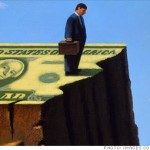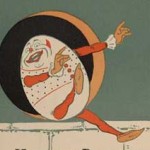 Last week the NEA announced a round of 34 grants totaling $11.5 million as part of a new program, ArtPlace, which aims to integrate artists and arts groups into local efforts in transportation, housing, community development and job creation as an important tool of economic recovery. ArtPlace is a joint-initiative of the NEA and a consortium of foundations, corporations and federal agencies. Luis A. Ubiñas, president of the Ford Foundation and chairman of the ArtPlace Presidents’ Council, is quoted saying: “The arts are inherently valuable, and they’re also part of what’s going to get us out of this economic problem we’re in.â€
Last week the NEA announced a round of 34 grants totaling $11.5 million as part of a new program, ArtPlace, which aims to integrate artists and arts groups into local efforts in transportation, housing, community development and job creation as an important tool of economic recovery. ArtPlace is a joint-initiative of the NEA and a consortium of foundations, corporations and federal agencies. Luis A. Ubiñas, president of the Ford Foundation and chairman of the ArtPlace Presidents’ Council, is quoted saying: “The arts are inherently valuable, and they’re also part of what’s going to get us out of this economic problem we’re in.â€
I must admit I winced as I read this quote. The nod to the inherent value of the arts seems somewhat insincere nuzzled as closely as it is to the rather bold statement that the arts are going to save us from our economic woes. On a whim, I pulled from the shelf my copy of the W. McNeil (Mac) Lowry edited book, The Performing Arts And American Society. Lowry was the much revered grants officer at the Ford Foundation. As director of the arts and humanities program (starting in 1957) Lowry recommended massive infusions of capital into the cultural sector over a period of approximately twenty years.  On p. 5 he lays out the ten claims, as he calls them, that were being made for the arts in American society in the 1950s: “The arts were said to be:
- Important to the image of the American society abroad.
- A means of communication and consequently of understanding between this country and others.
- An expression of national purpose.
- An important influence in the liberal education of the individual.
- An important key to an American’s understanding of himself, his times, and his destiny.
- A purposeful occupation for youth.
- In their institutional form, vital to the social, moral, an educational resources of an American community.
- Therefore good for business, especially in the new centers of population.
- Components for strengthening moral and spiritual bastions in a people whose national security might be threatened.
- An offset to the materialism of a generally affluent society.â€
At the end of the list Lowry remarks,
Note that the arguments advanced for the arts in the fifties almost totally accept their role as a means to some other end. It is equally noteworthy that many of the proponents of these claims were busy translating their interest in the arts into buildings, a rash of cultural centers across the country. The so-called ‘cultural explosion’ of the fifties and sixties was in great part promotional.
Indeed, when you think about what was going on in the world in the mid-twentieth century and read this list it’s quite clear that the arts were being promoted as a symbol of freedom and capitalism and democracy.
Later in his book (p. 206) he writes,
At [a] philosophical and moral level, we must deal with what remains of the Puritan dilemma in American history—the ideal versus the useful, the sacral versus the materialistic. Though we are more than three centuries beyond Plymouth and the Massachusetts Bay Colony, how strongly does this influence persist? Or is it largely our historical consciousness of a stereotype that makes us wonder whether the public accepts artists or their creations only as instruments to educational and social ends? Who needs them?
And (on p. 181) in a section sub-titled The Hazard of Imagination:
The metaphysic of intellectual and moral energy is no simple matter. The human imagination, poetic or scientific, has few limits. It is impossible, and once one might have thought it undesirable, to try to control either. Imagination—lyrical, artistic, or mechanical — is the mortal enemy of habit and routine. Anything threatening habit or routine, those relatively safe paths by which we endure to survive our hazards of accident or circumstance, causes suspicion and fear in various kinds of degrees. The scientist, since he or she is associated with metrics which impinge upon the necessity of maintaining breath and blood, is always protected and supported more than poets or artists whose imaginativeness, invention, or fantasy are both unmeasured and immediately unmeasurable.
Economic impact arguments may fail to fortify the footing of the arts in society in any meaningful or sustainable way; but by George, they sure do succeed in talking us back from the hazardous ledge of imagination, invention, and fantasy (oh my!).
And thus, over the past 2-3 decades, in the absence of good metrics for assessing the value of our distinctive qualities and in the midst of one economic crisis after another, we have increasingly defaulted to economic impact arguments to make the case for the arts. Even in this so-called ‘creative economy’ it seems it’s not actual artistic invention that is valued; rather, the arts are valued for symbolizing and signaling the trendy variety of ‘creativity’ that is perceived to lead to economic regeneration and that cities, regions, and industry so desperately want to coin.*
Is it worth noting that the inherent value of the arts is no more easily measured in France than in the US?
But, of course, they do have something the US doesn’t have. Among other interpretations, Mr. Lowry’s book (written in 1977) can be read as a plea for the articulation of a cultural policy. Absent a cultural policy (as we remain nearly 35 years later) we are left to induce the purpose or role of the arts in US society from the nature of grants made (or initiatives supported) by the NEA and the public statements issued about them.
PS: Those who have been following this blog since I started it last November will know that I am not a fan of the economic impact defense. (See my first two posts on this blog here, and here for some thoughts on the topic.)
20 Sep 2011 amendment to this post: Carol Coletta has clarified that “ArtPlace is not a program of the NEA”. My sincere apologies for misconstruing it as such.
* For more on this topic see Chris Bilton (2006), Management and Creativity, pp. 158-66.


